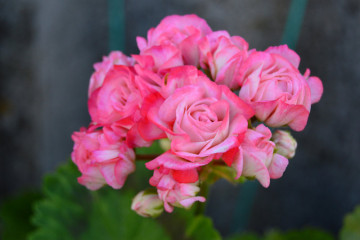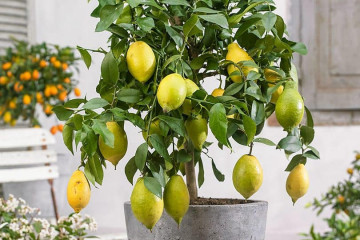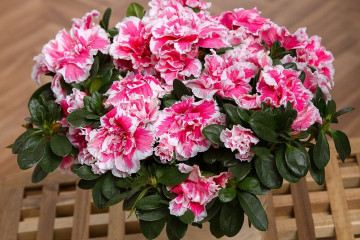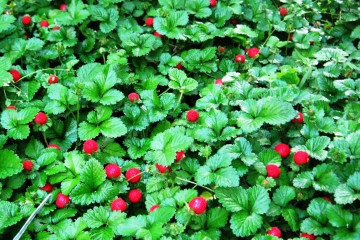Nerine: planting and caring for a plant for successful cultivation
Content:
Nerine is a bulbous plant that has up to 30 varieties. This crop is an ornamental perennial that grows naturally in South Africa. In countries with cold climates, it must be grown at home. When breeding nerine, landing and leaving have certain characteristics.
Main types
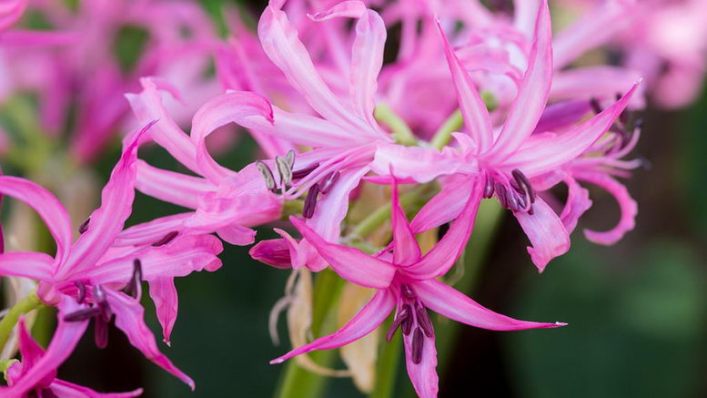
The plant is characterized by unusual decorative flowers.
Nerine is a flower that belongs to bulbous perennials. It belongs to the Amaryllis family. Currently, many names of the culture are known - spider lily, cape flower, sea nymph.
Nerine is characterized by flat leaves of a linear type, which have a rich green color. The bulbs reach 5 cm in diameter. The buds are formed on the peduncle. In length, it reaches 40-50 cm. A thin stem is decorated with an inflorescence, which includes several buds in the shape of a funnel.
Flowers do not exceed 4-5 cm in diameter. They can be white, pink, red, orange. The flowers are characterized by narrow petals and a wavy edge. Blossoming is usually observed in autumn - in September-October.
The flower has not very good winter hardiness. In the Russian climate, the culture is mainly grown at home. In summer, the bush can be taken out on an open veranda or outside. In areas with mild climates, the crop can be planted in open ground.
The genus of this perennial plant includes up to 30 species. The most popular types of nerine:
- Nerine Bowdenii. This plant is characterized by belt-like leaves and an elongated bulb, part of which can be seen above the ground. The green part can grow up to 25-30 cm. The width of the leaves can be 2-3 cm. They have a glossy surface and are covered with veins. On the upper part of the peduncle there are umbellate inflorescences that contain 5-10 flowers. They are characterized by curved petals. The culture blooms in different shades of lilac. If you plan to plant Nerin Bowden, cultivation and care have certain characteristics.
- Sarneian. This type of culture is characterized by large flowers. In this case, the petals of the plant have slightly curled edges. Flowers are white, orange, red.
- Shy. This plant is complemented by beautiful white flowers. On average, their number is 5-6 pieces. The leaves are elongated and have a slight bluish tint.
- Narrow-leaved. The main difference between this variety is considered to be narrow leaves. The flowers of the culture are lilac-pink in color.
- Hatton. It is a beautiful plant with lush flowers. In this case, the peduncle is decorated with small pink buds.
- Wavy. The flower has straight leaves. It is characterized by pink or red buds. On average, there are 8-10 of them.
- Twisty. The culture is rarely grown by flower growers. It has some features during flowering. The flower stalks of the culture are decorated with beautiful bell-shaped flowers. They have ribbed edges. The color of the buds can be white or light pink.
- Curved. This type of plant is characterized by large buds that have a scarlet shade of petals. The leaves of the culture do not stop developing even during flowering.
- Low. The growth of the leaves of the plant coincides with the development of the peduncle. At the same time, 10-20 flowers grow on one leg. They are pink or red.
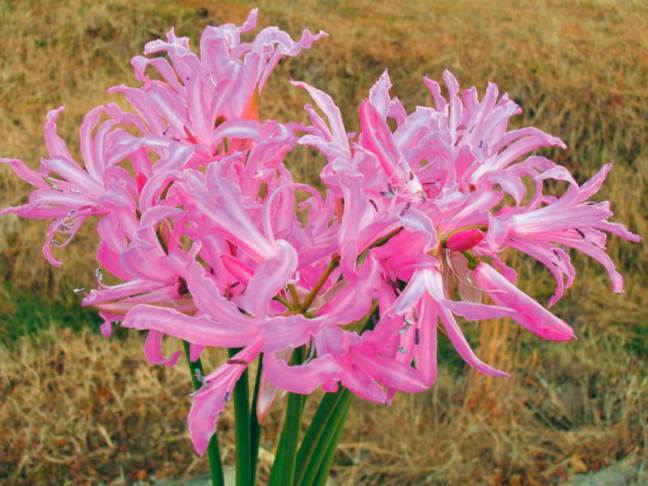
Nerine Bowden is one of the most common varieties
Home care
Growing a culture is easy enough. Despite the fact that the plant is native to Africa, it can also be planted in Russia. In the southern regions, it can be outdoors for a whole year. The flower must be properly looked after.
Air humidity
The plant likes moist soil, but it needs dry air. Therefore, you do not need to use trays of water or wet towels when growing a culture.
Temperature
In summer, culture bulbs should be kept in a dry, warm place. They need to create optimal conditions. Temperature parameters should be + 23 ... +25 degrees.
After the end of flowering and until the beginning of spring, the plant needs cooler air. He needs to provide a temperature of +8 .. +10 degrees. If you leave the bush warm, it will not be able to bloom next season.
Fertilizers
To feed the crop, you need to use liquid fertilizers. During flowering, fertilizing should be applied at intervals of 7 days. After flowering and until the end of spring, the bush is fertilized every 2 weeks. Fertilizers should not be applied from May until the beginning of flowering.
Watering
The flower needs frequent, but not too abundant watering. Otherwise, there is a risk of bulb rotting. Most of the moisture is required for the culture in early autumn, when active flowering is observed.
Towards spring, the amount of watering should be reduced. During the dormant period, the flower should not be watered at all. It is necessary to renew soil moisture by the end of August - during this period, the bush comes to life and begins to prepare for a new flowering.
By the end of the dormant period, the bulb acquires a bronze tint. At this time, it is necessary to change the topsoil.
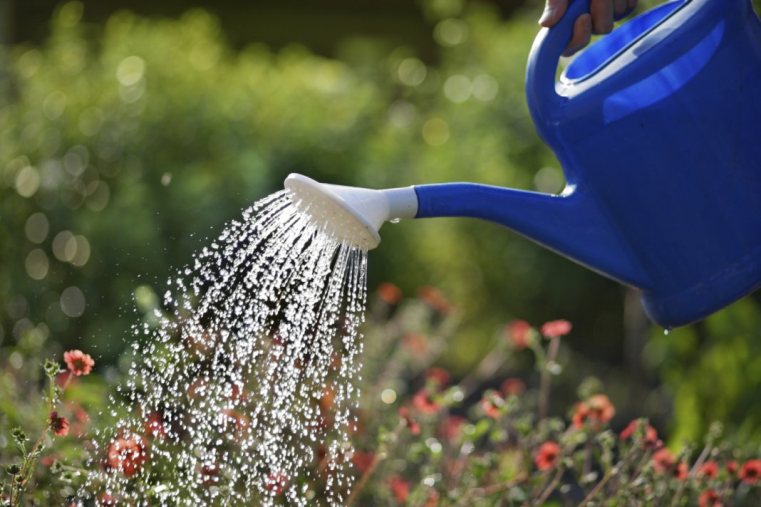
The plant needs proper soil moisture
Plant transplant
The resting period for nerina lasts from May to August. At this time, you need to abandon fertilization. In the first half of August it is worth starting to forcing the bush. At the beginning of awakening, a bronze bloom forms on the neck of the bulb. At this point, the bulb must be planted in fresh soil and watered systematically.
When growing a culture at home, it is permissible to plant its bulbs in 1-2 pieces in a pot. It is important to pay attention to the choice of packaging. Its diameter should not exceed 13 cm. Too large a pot interferes with the normal development of the culture. When planting, care must be taken that the bulb head is not submerged in the soil.
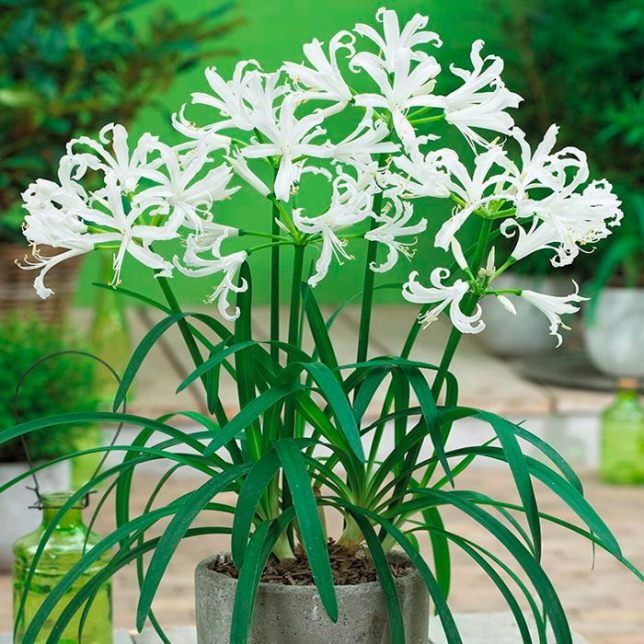
When transplanting a culture, you need to choose the right pot size.
Reproduction methods
Bushes can be propagated in a variety of ways. Today, this is most often done by the seed method or daughter bulbs.
Seeds
It is quite possible to grow a culture on your own using a seed method. However, this is a very laborious process that requires patience. First of all, you need to prepare the ground. It needs to be placed in small boxes. Seeds should be placed in them. From above they are lightly covered with soil, watered and covered with a film to speed up the process of sprouting.
For nerine breeding to be successful, it is important to properly care for the seedlings. They need to ensure a constant temperature of +22 degrees. Regular watering and systematic ventilation is also important.
When sprouts appear, the film must be removed. When the first 2 leaves are formed, the seedlings must be transplanted into individual pots and moved to a well-lit place. Young bushes need to be protected from direct sunlight.
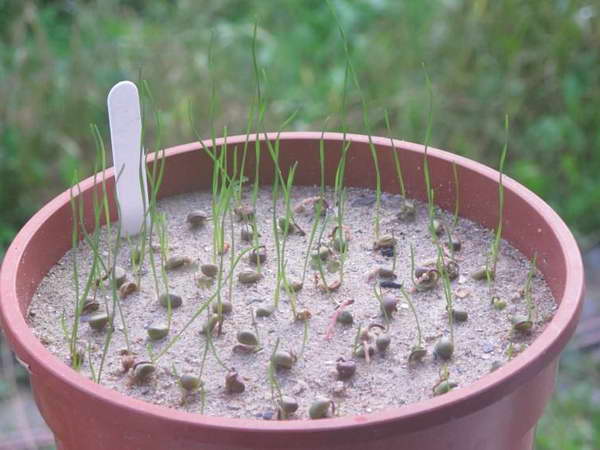
The culture can be propagated by the seed method.
Nerine is a beautiful exotic plant that is very popular among flower growers. To succeed in growing a crop, you need to provide it with full and high-quality care. It should be comprehensive and include timely watering and top dressing. It is also important to maintain optimal temperature parameters in the room in which the bush is located.
